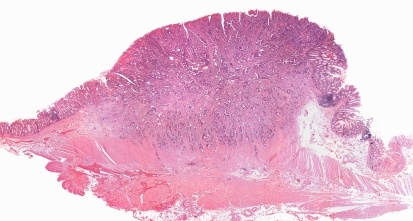Gain new perspectives for faster progress directly to your inbox.

Today, RAS genes and related oncogenes impact over 30% of the world’s cancers including pancreatic, lung, and colorectal. Previously, these were considered undruggable targets due to shallow binding sites, difficult locations, and low enzyme activity. A high-profile example of a covalent inhibitor includes sotorasib, (LUMAKRAS®) that was recently approved by the FDA and is part of a growing class of RAS inhibitors that has projected sales of over $1 billion in 2024.
Targeted covalent inhibitors leverage a guidance system and warhead (figure 1) that has proven easier to bind, more targeted, and has produced fewer adverse side effects. Before 2000, many drugs that formed a covalent bond with targets did so non-selectively, which often led to undesired side effects. This led to the belief that covalent inhibitors were not ideal drug candidates, resulting in limited development by the pharmaceutical industry. However, covalent drugs have experienced a remarkable resurgence in the last few years as evidenced by the growing number of approvals by the USFDA, including eight drug approvals in the past ten years for the treatment of lymphoma, lung cancer, and breast cancer.

Today, scientists have designed “warheads” with remarkable functionality that exhibit finely tuned reactivity, which only forms covalent bonds when positioned at the desired target. Recently, experts from Totus Medicines and CAS joined together for a webinar on October 19, 2023.
Discover the latest developments on targeted covalent inhibitors and their application in tackling previously undruggable targets. Discover more valuable insights into the covalent inhibitor landscape in our CAS Article based on our recent publication in ChemRxiv.
Key highlights from the Webinar

To set the stage for this discussion, Dr. Gary Gustafson provided a landscape view of this emerging area of science. With publications and IP trends signaling a rise in targeted covalent inhibitor research advancement, there is now a greater understanding of their true potential. Diving deeper into the covalent inhibitor landscape revealed insights and trends of the most frequently used warheads, the proteins they target, and the indications they address.

Dr. Neil Dhawan rounded out the presentation by sharing how covalent drugs create precise bonds to offer treatment options for a wide variety of diseases. He shared Totus’ latest research on PI3Kα bioactivities and TOS-358, a molecule that can achieve complete inhibition of PI3Kα in a highly specific manner. In conclusion, the clinical approach to advance TOS-358 to accelerated approval for treating multiple PI3Kα mutant tumors was discussed.
To wrap up, attendees asked a wide range of questions, from what might have fueled the resurgence of covalent drug discovery, to what exciting new technologies are being utilized to discover covalent drugs. In short, this was an engaging panel that highlighted the promising opportunities of targeted covalent inhibitors, how they treat cancer, and more.
See the recording and the associated slides from the webinar here.



